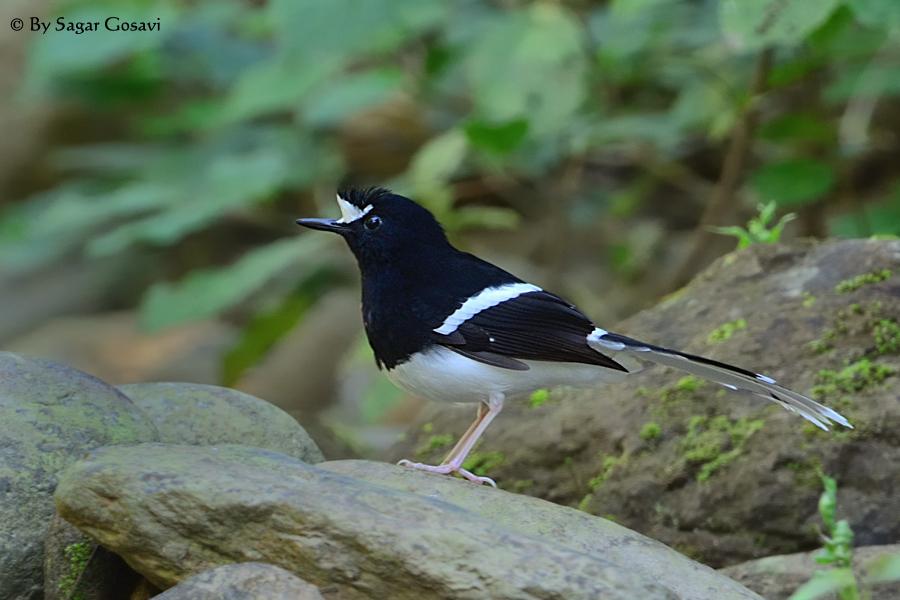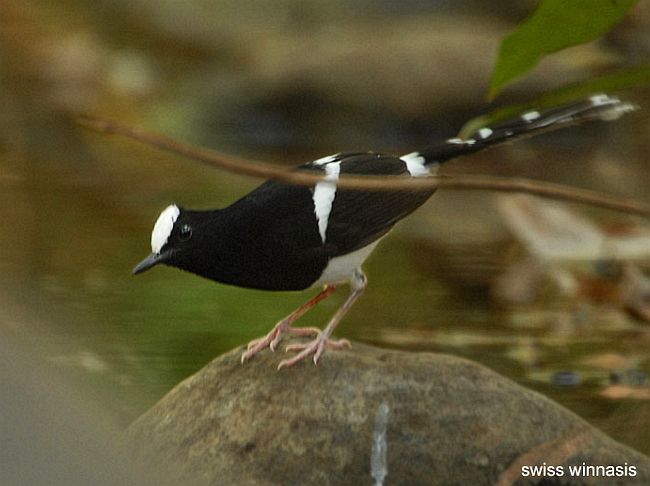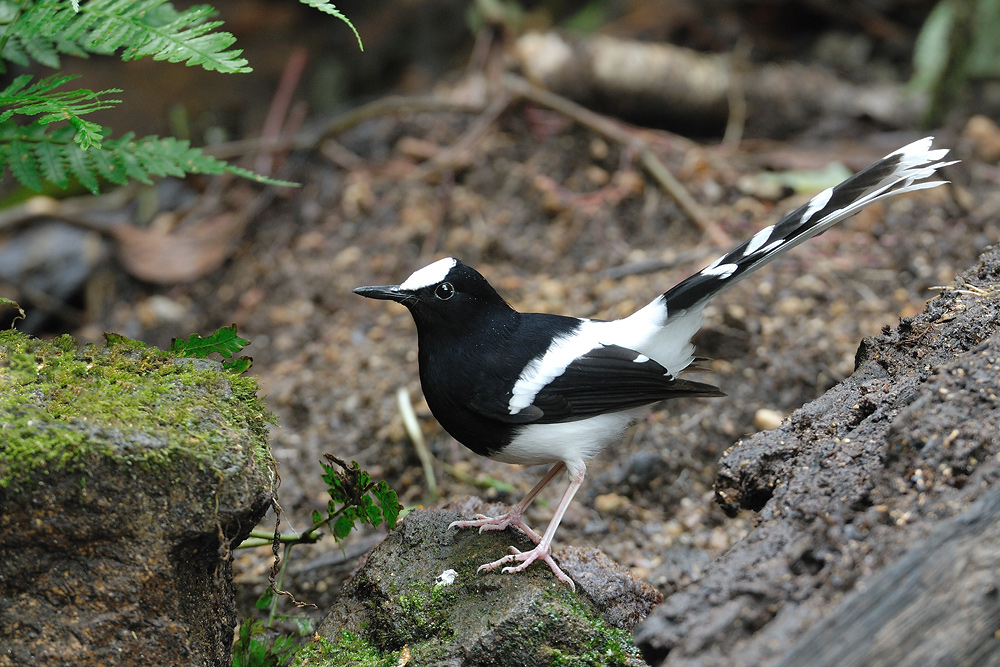
Enicurus leschenaulti
TAXONOMY
Enicurus leschenaulti Hartert, 1909, Assam.
OTHER COMMON NAMES
English: Leschenault’s forktail; French: Йnicure de
Leschenault; German: Weissscheitel-Scherenschwanz; Spanish:
Enicurino de Corona Blanca.
PHYSICAL CHARACTERISTICS
11 in (28 cm); 1.8–1.9 oz (50–55 g). Black mantle and breast
with white from bill to nape. Wings are dark with white bar;
tail is banded black and white. Rump and abdomen white, legs
pinkish, and bill black.
DISTRIBUTION
Northeast India, Bangladesh, Myanmar, Thailand, Indochina.
HABITAT
Fast-flowing streams and rivers, sometimes tiny rivulets in
dense evergreen forest.
BEHAVIOR
Perches on rocks and stumps in or beside streams and waterfalls,
sometimes on forest tracks, constantly bobbing long tail
up and down and flicking it open; sometimes pursues insects in
hovering flight, also submerges in water and walks on river
bottom.
FEEDING ECOLOGY AND DIET
Aquatic insects and their larvae.
REPRODUCTIVE BIOLOGY
Monogamous; breeds April–June; nest of moss, leaves and
rootlets, in overgrown bank, rocks or boulders; three or four
eggs.
CONSERVATION STATUS
Not threatened. Fairly common and secure.
SIGNIFICANCE TO HUMANS
None known.
Photo Gallery of - White-crowned forktail




 Animalia Life
Animalia Life